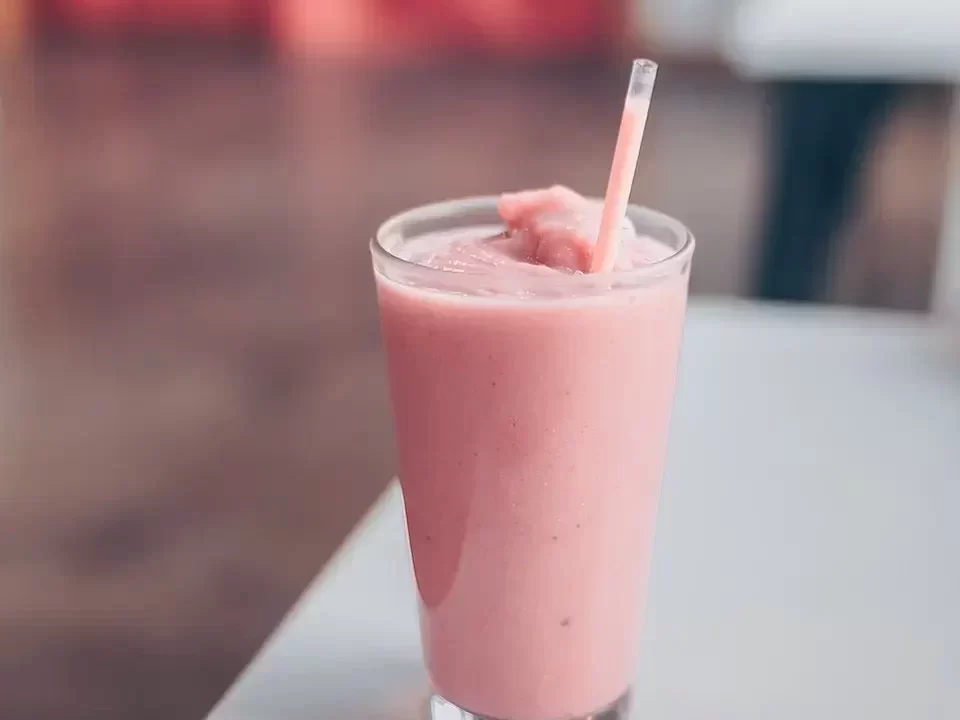How to Make Cold-Pressed Juice?

Cold-pressed juice is a healthy and popular drink made by using a hydraulic press or a masticating juicer to extract juice from fruits and vegetables. Unlike regular juicing, which uses high-speed methods that produce heat, cold-pressed juicers operate slowly without heat.
This slow process preserves important nutrients and enzymes in fruits and vegetables, making the juice healthier and more nutritious. People love cold-pressed juice because it offers a convenient way to get essential nutrients and antioxidants without added sugars or artificial ingredients, promoting overall health and well-being.
Whether a simple orange juice or a complex green blend, cold-pressed juices offer a convenient and tasty way to enjoy the goodness of fruits and vegetables while promoting overall well-being.
How to Make Cold Pressed Juice at Home?
Many people want to be healthier, so they make their fresh juices at home. There are different ways to make juice, but one cool way is called cold-pressed juicing. It keeps all the good things in the juice.
Making fresh cold-pressed juice is easy and refreshing. Here’s how you can do it
1. Gather Fresh and Organic Ingredients
Make cold-pressed juice using fresh, high-quality ingredients. Whenever possible, opt for organic fruits and vegetables to avoid harmful pesticides and chemicals. Wash your produce thoroughly to remove dirt or residue.
2. Prepare Your Ingredients
Peel and chop the fruits and vegetables into smaller pieces, ensuring they fit easily into the feeding chute of your cold-press juicer. This step is essential for smooth and efficient juicing.
3. Choose the Right Cold-Press Juicer
Use the best cold-press juicer, also known as a slow juicer. Unlike traditional high-speed juicers, cold-press juicers operate at lower speeds, minimizing heat generation and preserving vital nutrients and enzymes in the juice.
4. Begin Juicing
Feed the prepared ingredients into the juicer one batch at a time. The slow grinding and pressing action of the juicer extracts juice while retaining the natural flavors and nutrients of the produce.
Read More: Does Cold-Press Juice Have Fiber?
5. Strain the Juice
Next, how to strain the juice? You can Strain the juice using a filtration bag or cloth. This step removes pulp, fiber, and any other solid particles, resulting in a smooth and refreshing juice.
Apply gentle pressure or use a hydraulic press to extract every drop of juice from the pulp.
6. Store Properly
Transfer the freshly pressed juice into clean, glass bottles or jars. Seal the bottles tightly and store them immediately in the refrigerator.
Cold-pressed juice is highly perishable and should be consumed within a day or two for the best flavor and nutritional value.
7. Clean Your Equipment
After making juice, it’s important to clean your juicer, filter bag, and all the other equipment properly.
Use special cleaning brushes to get rid of any leftover bits in every little corner. Regular cleaning is essential because it helps your equipment last longer and keeps your juice high-quality.
8. Enjoy and Share
Once your cold-pressed juice is made, enjoy the delicious, lively flavors! Know that you’re giving your body something healthy and wholesome. Sip and savor the goodness!
Consider sharing your creations with friends and family, spreading the joy of healthy living through cold-pressed juices.
How to Make Cold Pressed Juice Without Juicer?
Cold-pressed juice Packed with nutrients, and natural flavors, and devoid of additives, it’s one of the healthiest beverages you can enjoy.
There is no need for a juicer, you can make fresh and delicious juice at home with just a blender and strainer.
Here is a Step-by-Step Guide to Making Cold-Pressed Juice :
1. Choose Fresh Ingredients
Choose fresh ingredients for a delicious and nutrient-rich cold-pressed juice. You can make green juice using spinach, cucumber, green apple, lemon, and ginger. For a citrus boost, try using oranges and a splash of lime.
Wash your fruits and vegetables thoroughly to remove any dirt or debris.
2. Chop and Prep
Cut your ingredients into smaller pieces to make blending easier. For example, slice apples into quarters, peel citrus fruits and dice harder vegetables like carrots into smaller chunks.
3. Blend the Ingredients
Add your chopped fruits and vegetables into the blender. To ensure smooth blending, pour in a small amount of water or coconut water.
Blend on high until the mixture becomes a thick, smooth puree. Be patient; blending well is essential to extract as much juice as possible.
Add a small piece of ginger or a squeeze of lemon juice during blending for an extra zing and extended freshness.
4. Strain the Juice
Place your strainer, nut milk bag, or cheesecloth over a large bowl so you can strain the juice. Slowly pour the blended mixture into your chosen tool.
If you are using cheesecloth, bundle it up and squeeze firmly to extract every drop. For a fine mesh strainer, press down with a spoon or spatula to separate the liquid from the pulp efficiently.
5. Pour and Store
Once your juice is fully strained, transfer it into clean glass jars or bottles. Seal them tightly to maintain freshness.
Cold-pressed juice is best enjoyed immediately, but if you need to store it, refrigerate it and consume it within 24 to 48 hours for optimal flavor and nutrition.
Health Benefits of Cold-Pressed Juice
Cold-pressed juice has gained popularity in recent years due to its perceived health benefits.
Here are some potential advantages associated with consuming cold-pressed juice:
1. Preservation of Nutrients
Cold-pressed juicing involves hydraulic pressing, which minimizes heat and oxidation. This process helps retain the maximum amount of nutrients and enzymes present in the fruits and vegetables.
2. Rich in Nutrients
Cold-pressed juices are often made from a variety of fruits, vegetables, and sometimes herbs. These ingredients are rich in essential vitamins, minerals, and antioxidants that are beneficial for overall health and well-being.

3. Improved Hydration
Cold-pressed juices can contribute to your daily fluid intake, helping to keep you hydrated. Staying hydrated is essential for various bodily functions, including digestion, circulation, and temperature regulation.
4. Detoxification
Some proponents of cold-pressed juice claim that it helps the body detoxify by flushing out toxins. However, the body has its natural detoxification mechanisms, primarily carried out by the liver and kidneys.
5. Digestive Health
Certain fruits and vegetables used in cold-pressed juices, such as ginger and probiotic-rich foods, may support digestive health. Fiber present in some fruits and vegetables can also aid in digestion.

6. Boosted Immunity
Cold-pressed juices are a concentrated source of vitamins like vitamin C, which is known to boost the immune system. Antioxidants in these juices may also help in strengthening the body’s defense against illnesses.
7. Weight Loss
Cold-pressed juices are often low in calories and can be a part of a balanced diet, potentially aiding in weight loss when consumed as a replacement for high-calorie beverages.
It’s important to note that while cold-pressed juices offer these benefits, they should not replace whole fruits and vegetables in your diet. Whole fruits and vegetables contain fiber, which is often lost during the juicing process.
Conclusion
Making cold-pressed juice at home is a rewarding way to fuel your body with fresh, nutrient-packed goodness. By choosing high-quality ingredients and following simple steps like proper blending and straining, you can create delicious juices tailored to your taste.
Experiment with different fruits, veggies, and spices to find your perfect mix. Plus, nothing beats the satisfaction of sipping on a healthy drink made with care. Start juicing today and enjoy the vibrant flavors and health benefits every glass has to offer!